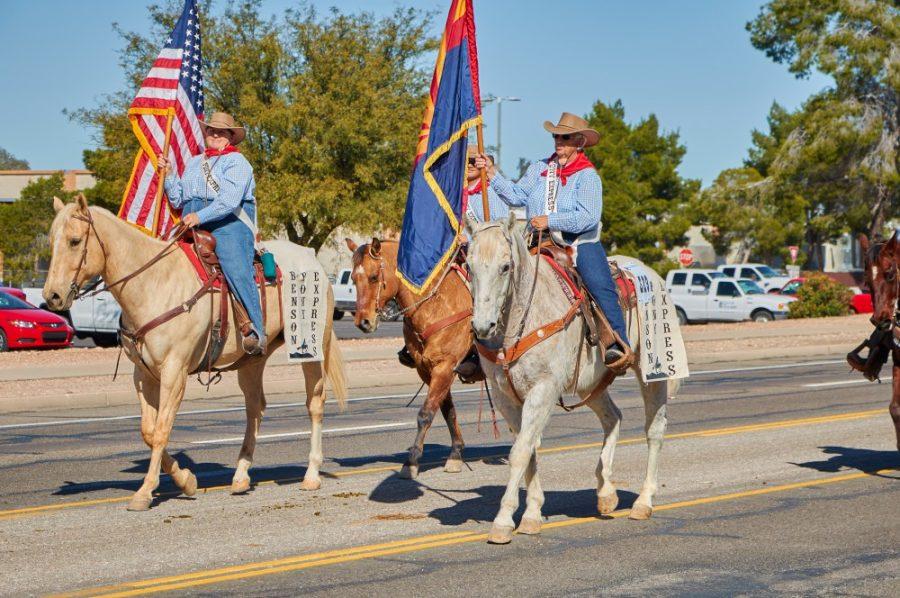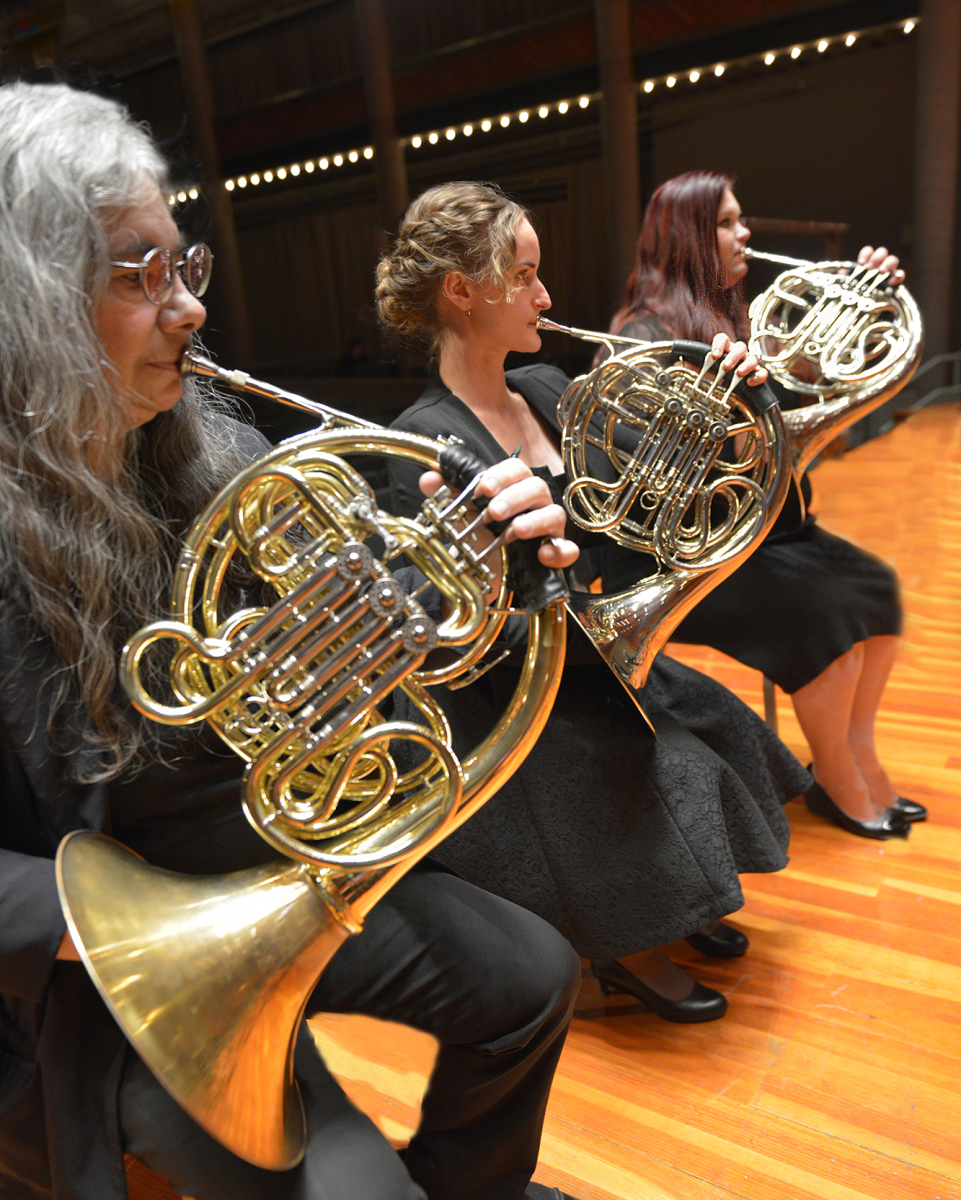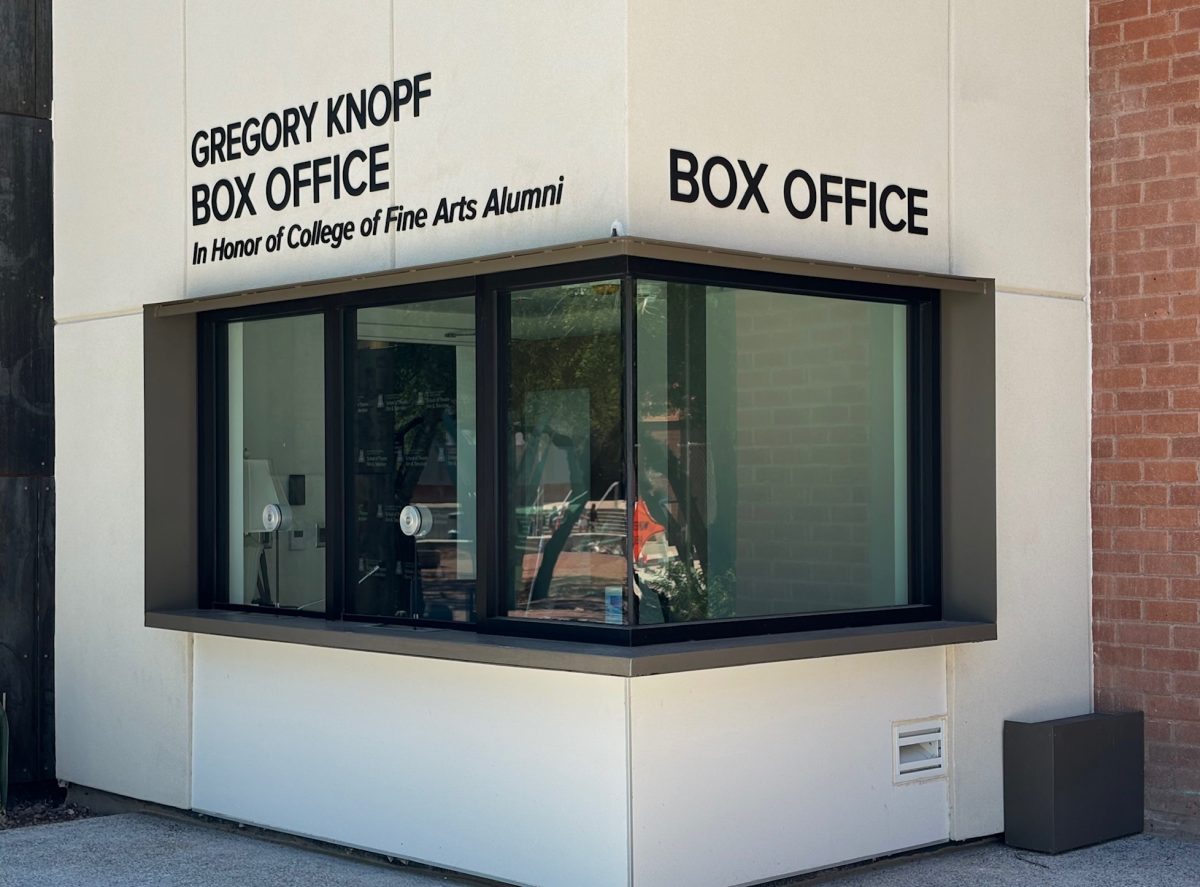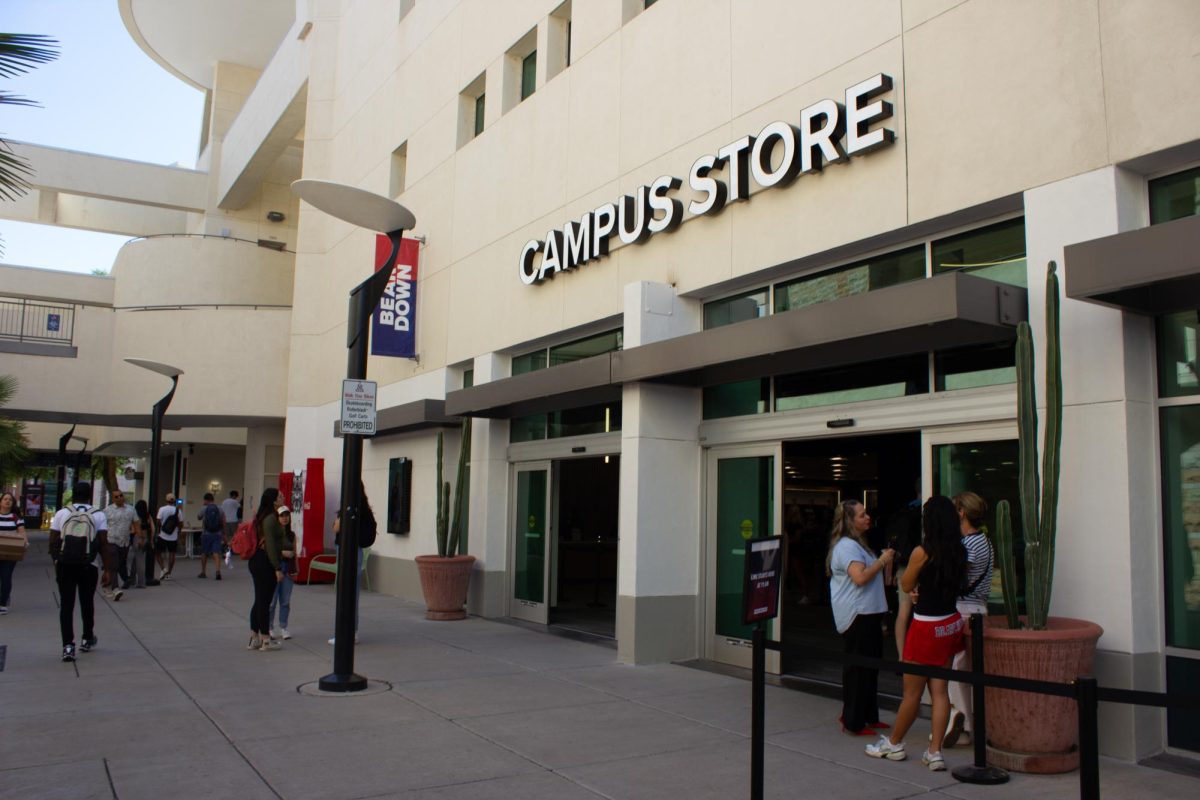People clad in cowboy boots and hats filled the streets during the Tucson Rodeo Parade on Thursday as part of La Fiesta de los Vaqueros.
This year, there were more than 200 entries in the parade, with about 2,200 people marching.
The parade began at 9 a.m. but didn’t arrive at the corner of Ajo Way and Park Avenue until 9:30 a.m. Leading off the parade was the Pride of Arizona, the UA marching band, and dignitaries followed.
Between marching participants, wagon entries pulled by horses were decorated with paper flowers and streamers. Parents and children crowded the sidewalks dressed in cowboy hats and holstered play pistols.

Parade entries were more than people waving from wagons. Women danced and cowboys trotted on their horses and swung lassos. Even the wagons were dressed to impress, adorned with colorful flowers and banners. Organizations decorated their wagons at the Tucson Rodeo Grounds Wednesday afternoon and into the evening.
RELATED: Rain fails to steal Tucson Rodeo’s thunder
The rodeo first began as a tourist attraction, and the parade started on the first day when the participants walked through the town and crowds would follow.
Five years after the first rodeo, the parade committee was formed. The Tucson Rodeo Parade Museum is open year-round and showcases many of the wagons featured in the parade.
Herb Wagner, a member of the Tucson Rodeo Parade Committee since 1986, remembers coming to the parade as a kid and watching his sister in the marching band. He began volunteering in 1982 when he helped push a wagon.
“It reminds me of the good things in Tucson,” Wagner said. “It’s just the tradition and keeping that western heritage alive.”
Wagner helps repair all the wagons, some of which are over 100 years old. The wagons are checked for maintenance regularly in order for them to appear in the parade.

Wagner said it’s a dying art. His favorite part of the parade is seeing the different entries and seeing how they evolve over the years.
“The League of Mexican-American Women has been in the parade for 35 years,” Wagner said. “Every year they do something a little different with their wagon. It’s just nice to see how each organization changes.”
Diane Culin has been a member of the parade committee since 1997.
RELATED: Rodeo lassos the heart of Tucson
She is the first woman to become a member and the first woman to be elected as the chairman of the parade. Her family has always been involved in the parade; her father and brother were a part of the committee.
Her favorite part of the parade is seeing the community come together to see something historic.
“I can’t think of any other event in Southern Arizona that’s been operating for 92 years,” Culin said. “I think it’s exciting. To me, it’s a community coming together with people of all different cultures to reflect such rich history.”
Some people travel out of state to come to the rodeo and parade. Bob Callsea from Idaho has been coming to Arizona for the past five years.
He first came to the rodeo last year and loved it so much he came back to visit. He said he loves the horses, the performers and the atmosphere.
“These horses rock it, and the people too, are great,” Callsea said. “This is bigger than what we have at home.”
Callsea said he has a great time at the rodeo and can’t wait to come back next year.
Follow Lauren Whetzel on Twitter.









